- Center for Research Computing Data
- Current Users
- Getting Started
- How to Login on Gaea
How to Login on Metis or Gaea clusters
The Metis and Gaea NIU clusters are accessible via SSH protocol. Linux and MAC systems do have or allow an easy installation of command line SSH clients. On Windows systems one can install the free "PuTTY" ssh client.
NIU specific:
Only protected NIUwireless network (ZID/password) or wired desktops can be used for connections. Cluster is not accessible from the public wireless "NIUguest" network. Connection instructions:
Cluster access from Linux or MAC
- open a terminal program (xterm, console, e.t.c.)
- follow instructions from the welcome message
You'll start by opening the command line terminal and entering in
- ssh -Y yourUserID@metis.niu.edu
or - ssh -Y yourUserID@gaea.niu.edu
Where you will replace "yourUserID" with the user ID provided for you. You'll then be asked to provide your password. Note: While typing in your password, you won't see bullet-points appear you might see elsewhere when entering passwords and instead see nothing change at all. It is capturing your keyboard input, though!
For the very first login, use the temporary password from the welcome message. When connected, the system will require you to change the temporary password as described below. The new password should be a password of your choosing with a minimum length of 8 symbols. We recommend using a mix of lowercase (a-z) and uppercase (A-Z) letters, base digits (0-9) and special characters (~!@#$%^&*_-+=`|\(){}[]:;"'<>,.?/0). Do not use trivilal combinations, do not include your user ID or any part of your name. If you'd like help choosing a new password, a variety of password generator apps and online password generators are available online.
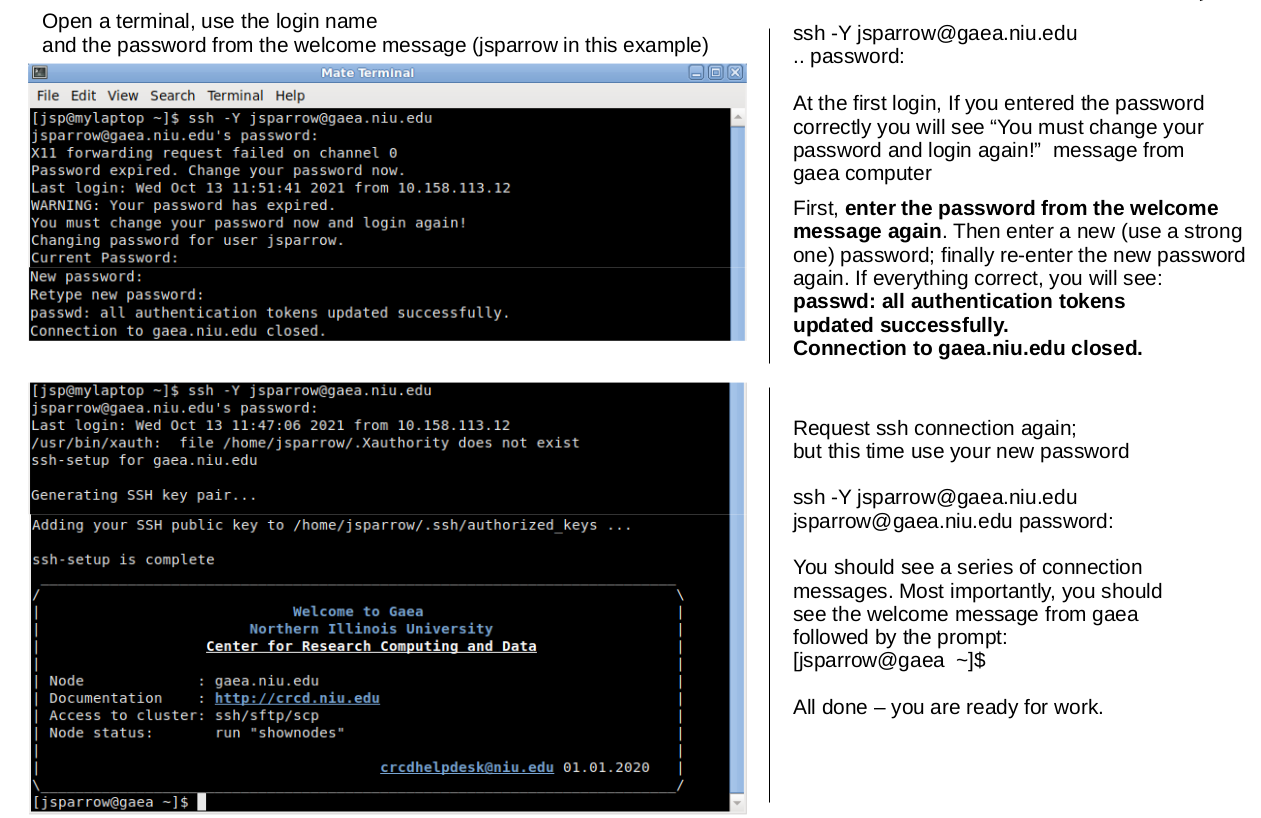
Cluster access from Windows
- install and run PuTTY ssh client
- configure/save a session to metis.niu.edu or to gaea.niu.edu
Download PuTTY
You will first need to download software that will enable your machine to connect to Gaea. You can do as much with PuTTY, a free-to-download, no-installation-required program that can establish this connection.
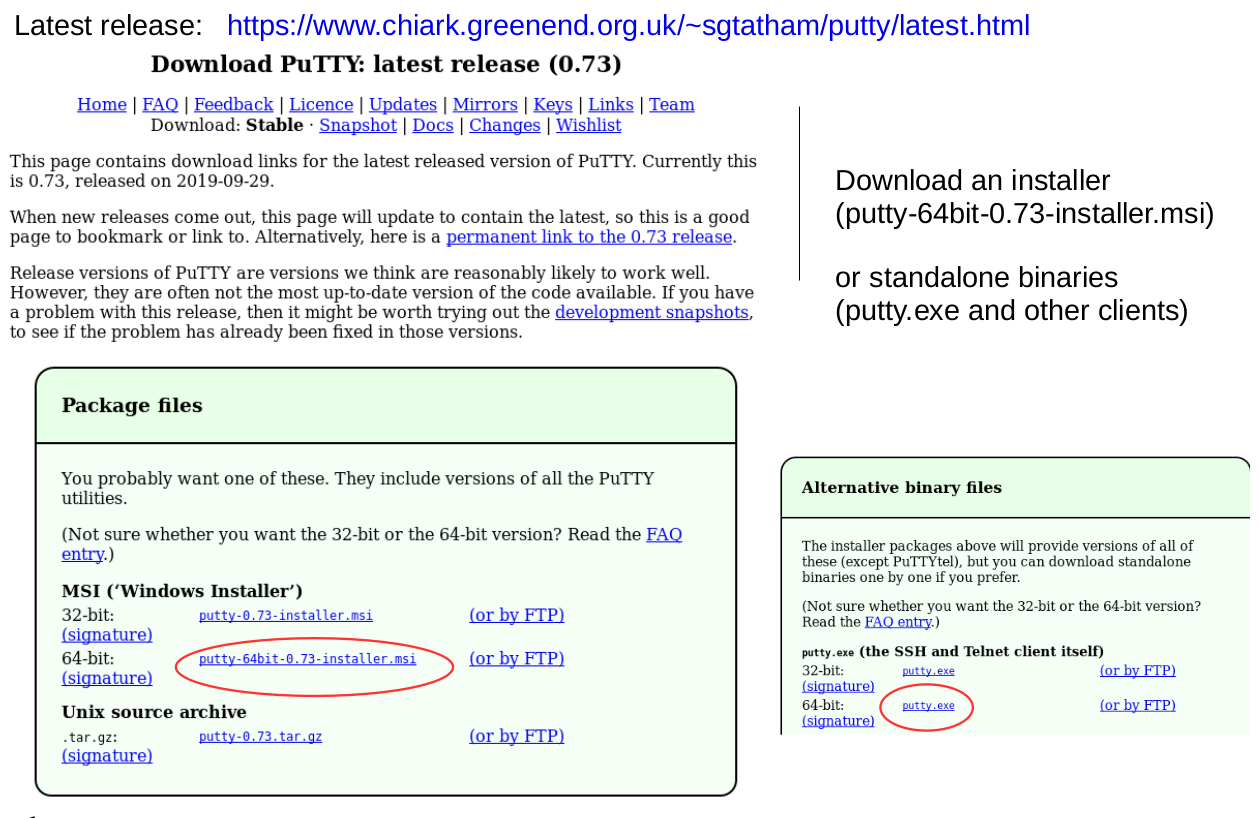
You'll click on the corresponding 32-bit or 64-bit version that matches your installation of Windows. Most modern PC's will have a 64-bit version of Windows installed. Since PuTTY doesn't require any installation, you should be able to immediately double-click the program to open.
Configure Gaea Session
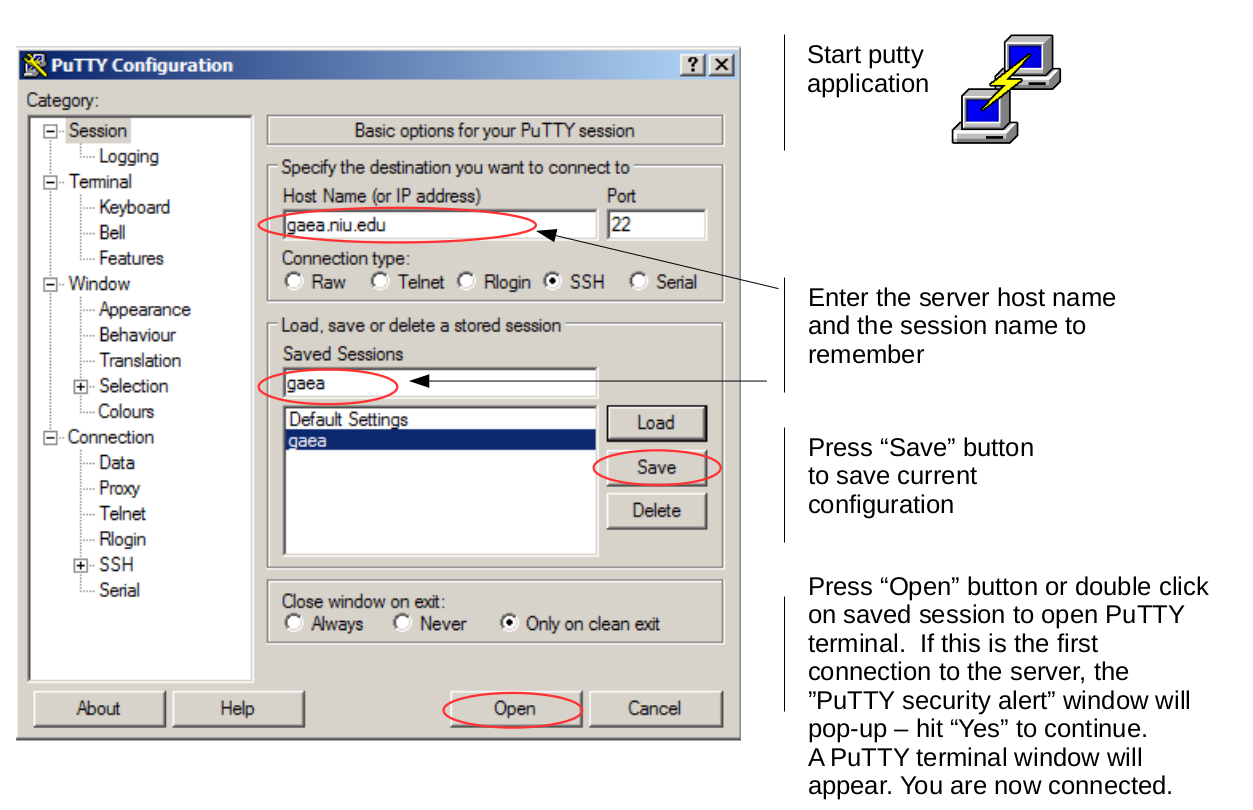
For your convenience, the first thing you will want to do is "save" the Host Name/Port configuration necessary to connect to Gaea. In the text field labeled "Host Name (or IP address), you'll enter
gaea.niu.edu
While leaving the "Port" value to the default 22. Next, enter in "Gaea" in the text field labeled "Saved Sessions", followed by clicking the "Save" button. This will then allow you to easily connect to Gaea again later, by simply double-clicking the "Gaea" added to the list of stored sessions.
From here, you can double-click the "Gaea" listing found in the listbox below "Saved Sessions" or click on "Open" to attempt a connection. You'll then be presented with a terminal screen that will request your user-ID and password. Note: While typing in your password, you won't see bullet-points appear you might see elsewhere when entering passwords and instead see nothing change at all. It is capturing your keyboard input, though!
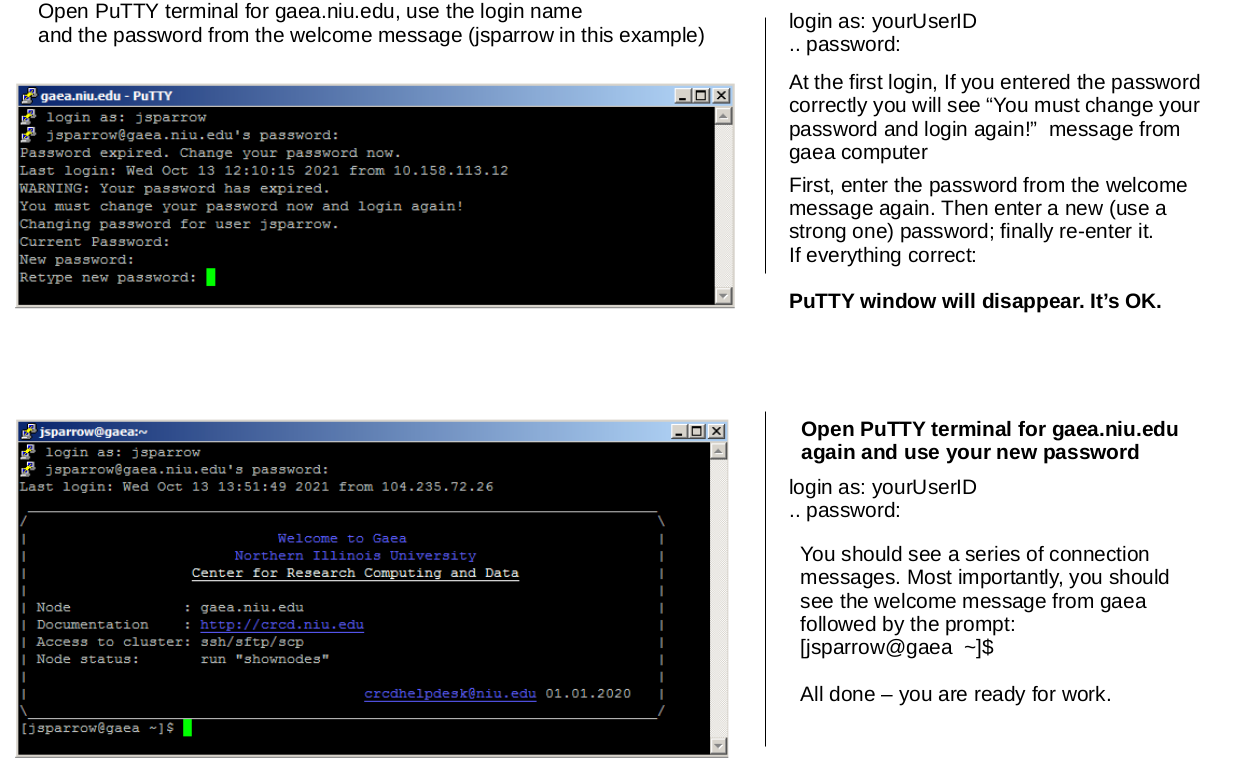
Connecting to Gaea
Once you have successfully logged in, you should see a series of connection messages, key fingerprints, "randomart", all of which can be presently ignored. Most importantly, you should see...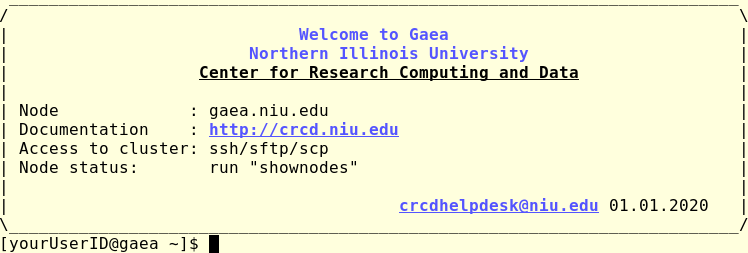
Where the string of character(s) found just before the closing-square bracket is your current directory. When you first log in, this should be the tilda (~) character, representing your home directory. Congratulations! You're ready to start creating jobs to be submitted and run!
Beginners quickstart
Those who have not been working in a Linux environment before, may need to complete the following short tutorials.
A minimal Linux dictionary
- terminal - the window you are working in
- command line - the line in the terminal to enter a command, starts with the "prompt":
[userName@gaea ~]$- login shell - a program that interprets commands ("bash" by default)
- shell environment - a set of variables known to the shell program. You can list the predefined variables with
[userName@gaea ~]$ envThe variables are displayed in capital characters; their assigned values follow the "=" sign.
- data disks - devices to store data
- file - a collection of data, a digital document, stored on a storage device under a specific name
- directory or folder - a location for storing files on your data discs
- path - an address of a specific file or directory in the filesystem directory tree in form /dir1/subdir1/subdir1/myfile
- current working directory - the directory in which you currently working in. To display, doecho $PWD
- home directory - the default directory, the directory in which you placed immediately after login. To display, doecho $HOME or echo ~/
- shell start-up files : ~/.bashrc and ~/.bash_profile. Special files in your home directory the login shell program checks at the beginning of the session. In these files, you can define custom shell variables and "aliases" (shortcuts to sequences of commands).
- shell script - a file with a set of commands which can be interpreted by a shell program, or by a specific interpreter
- application program - a file containing compiled (encoded) sequence of instructions the computer can run. For details see How programs are executed?
- To learn more about the bash and environment google for "bash tutorial".
- To use available software modules read this tutorial
A minimal command set
- To get fast help about a specific command, do "man command" or "info command" or "command --help". For example, try
[userName@gaea ~]$ man ls[userName@gaea ~]$ info ls[userName@gaea ~]$ ls --help - To list the content of a current folder: ls; ls -l; ls -la; ls -ltrh - provide a different level of listing details - correspondingly:
- ls - the single column listing
- ls -l - the detailed (long) listing
- ls -la - the detailed listing showing hidden files and folders (names begin with "." )
- ls -ltrh - the detailed listing showing files reversely ordered by the creation time with their sizes in "human-friendly" format (kilobytes, megabytes, gigabytes, terabytes).
- To create a new directory myNewDir in the /somePath/ folder
- mkdir /somePath/myNewDir
- if /somePath/ is not given the myNewDir will be created in the current working directory
- To enter directory /somePath/myNewDir:
- cd /somePath/myNewDir
- if /somePath/ is not given the destination directory will be the user's home directory
Editing files
To create an empty file with the name, for example, newfile.txt do
[userName@gaea ~]$ touch newfile.txt
To edit files in a terminal window, we suggest use emacs or vim editors programs. Examples: [userName@gaea ~]$ vim newfile.txt
or [userName@gaea ~]$ emacs newfile.txt
Warning - both editors have a very specific shortcut setting, google for corresponding tutorials and documentation. For less complex edits "nano" editor can be used.